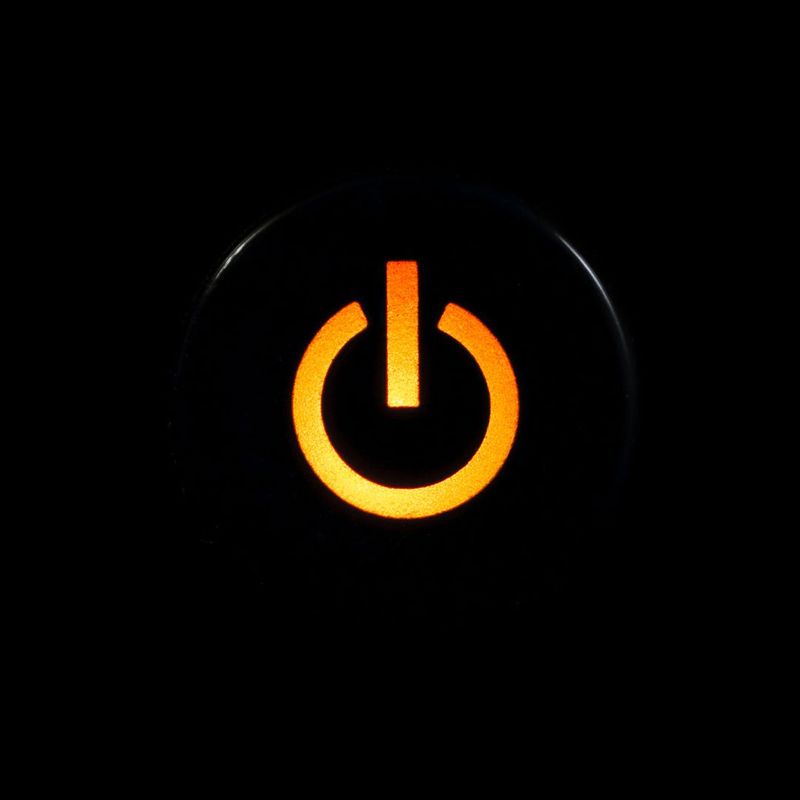Disclosure: This post contains affiliate links and I will be compensated if you make a purchase after clicking through my links. Learn More
When the power returns, the generator switches back to standby mode. This prevents damage and conserves fuel.
Generators are essential during power outages, ensuring continuous electricity supply. Understanding what happens to a generator when the power comes back on is crucial for its safe operation. Most modern generators have automatic transfer switches (ATS) that detect when the main power is restored.
These switches seamlessly transfer the load back to the utility source. This transition helps prevent electrical issues and ensures the generator is ready for the next outage. Proper maintenance and understanding of your generator’s functionality can prolong its life and enhance performance. Always consult the user manual for specific instructions related to your generator model.

Credit: thegeneratorhouse.com
Generator Functionality
Generators provide essential power during outages. Understanding their functionality helps you appreciate their value. This section explains how generators operate and switch back to the main power supply.
Basic Operation
Generators convert mechanical energy into electrical energy. They are essential during power outages. When the main power fails, generators detect the outage. The generator’s engine starts automatically within seconds. The engine drives an alternator, producing electricity for your home or business.
Generators come in different types. The most common are standby and portable generators. Standby generators are installed permanently and activate automatically. Portable generators are movable and require manual startup.
Switching Mechanisms
Switching mechanisms manage the transition between generator power and main power. The primary component is the Automatic Transfer Switch (ATS). The ATS monitors the main power supply continuously. When it detects an outage, it signals the generator to start.
Once the generator is running, the ATS disconnects your electrical load from the main power. It then connects your load to the generator. This ensures your home or business receives power seamlessly. When the main power returns, the ATS reverses the process. It reconnects your load to the main power and shuts down the generator.
Some generators have a manual transfer switch. In this case, you must switch power sources manually. Manual switches are common in portable generators.
Here is a quick comparison:
| Feature | Automatic Transfer Switch | Manual Transfer Switch |
|---|---|---|
| Operation | Automatic | Manual |
| Response Time | Seconds | Minutes |
| Common Use | Standby Generators | Portable Generators |
Understanding these mechanisms ensures proper generator use. Proper use guarantees power stability during outages and restores normalcy swiftly.

Credit: powerequipment.honda.com
Power Restoration Impact
When power gets restored, your generator stops running. The transition from generator to main power can vary based on your system type. Understanding how this switch occurs can help ensure safety and efficiency.
Automatic Transfer Switch
An Automatic Transfer Switch (ATS) simplifies the process. It detects when the main power returns and automatically switches back. This system ensures minimal downtime and seamless power transition.
Here’s how ATS works:
- Detects power restoration immediately
- Switches power source from generator to main grid
- Shuts down the generator safely
- Monitors for any power fluctuations
ATS systems are beneficial for critical operations. They provide automatic and quick power restoration without human intervention.
Manual Transfer Switch
A Manual Transfer Switch (MTS) requires human input. When power returns, someone must manually switch back to the main grid. This process can be slower and involves more steps.
Read Here: How Much to Install Generator Transfer Switch
Steps to operate MTS:
- Verify that main power is stable
- Turn off the generator
- Switch the transfer switch to the main power
- Restart essential appliances and systems
An MTS is often used for smaller or less critical operations. It provides control but requires constant monitoring.
| Feature | Automatic Transfer Switch | Manual Transfer Switch |
|---|---|---|
| Switching Speed | Immediate | Delayed |
| Human Intervention | Not Required | Required |
| Operational Complexity | Simple | Complex |
| Cost | Higher | Lower |
Both ATS and MTS have their advantages. Choose based on your needs and operational importance.
Generator Shutoff
When the main power returns, your generator needs to shut off. This process can be automatic or manual. Proper shutoff procedures ensure safety and prolong the generator’s lifespan. Below, we explore both automatic and manual shutoff methods.
Automatic Shutoff
Many modern generators come with an automatic shutoff feature. This feature kicks in when the main power resumes. The generator senses the return of power and switches off automatically. This helps in preventing damage to the generator and your electrical devices.
- Saves time and effort
- Reduces risk of human error
- Protects connected devices
An automatic shutoff is convenient for home and business use. It ensures the generator stops running without any manual intervention.
Manual Shutoff Procedures
Older models or budget generators may require manual shutoff. Here are the steps to manually shut off your generator:
- Wait for the main power to return.
- Turn off all connected appliances.
- Switch the generator to the “Off” position.
- Disconnect the generator from the power source.
- Store the generator in a safe, dry place.
Manual shutoff requires attention and careful handling. Always ensure the generator is cool before storing.
| Shutoff Type | Pros | Cons |
|---|---|---|
| Automatic |
|
|
| Manual |
|
|
Potential Issues
When the power returns, your generator may face several potential issues. Understanding these problems is crucial for maintaining your generator’s health.
Surge Risks
Power surges can damage your generator. When the main power returns, the sudden shift can create a spike in voltage. This surge may harm the generator’s internal components.
To minimize surge risks, consider installing a surge protector. This device can help absorb excess voltage, protecting your generator and other electrical devices.
Mechanical Problems
Mechanical problems often arise when the power returns. The sudden change in load can stress the generator’s engine and other parts.
Common mechanical issues include:
- Overheating
- Oil leakage
- Wear and tear on moving parts
Regular maintenance can help prevent these issues. Make sure to check oil levels and inspect moving parts often.
| Issue | Cause | Solution |
|---|---|---|
| Overheating | Sudden load change | Regular cooling system checks |
| Oil Leakage | Wear and tear | Frequent oil checks |
| Component Damage | Power surge | Install surge protector |
Safety Measures
When the power returns, your generator must handle the transition safely. Implementing proper safety measures ensures the smooth operation of your generator. This section covers essential precautions to protect your equipment and home.
Proper Maintenance
Regular maintenance extends your generator’s life and ensures reliable performance. Here are key maintenance steps:
- Check the oil level regularly.
- Inspect air filters and replace them if dirty.
- Examine spark plugs and clean or replace them.
- Test the battery and keep it fully charged.
Create a maintenance schedule and follow it strictly. Proper care prevents unexpected breakdowns and ensures the generator runs smoothly.
Surge Protection
A power surge can damage your generator and appliances. Installing surge protection safeguards your equipment. Here are ways to protect against surges:
- Install a surge protector at the main electrical panel.
- Use outlet surge protectors for sensitive devices.
- Ensure proper grounding of your electrical system.
Surge protection devices absorb excess voltage, preventing damage. It keeps your generator and home safe from electrical spikes.
Common Misconceptions
Many people believe various myths about generators and power restoration. These misconceptions can lead to unnecessary worries and improper use of generators. Let’s dive into the common myths and concerns.
Generator Damage Myths
One of the biggest myths is that a generator gets damaged when the power returns. This isn’t true. Modern generators have automatic transfer switches (ATS). These switches ensure a smooth transition back to the main power supply.
Another myth is that the generator’s engine will overheat. This is unlikely as generators are built with cooling systems. These systems prevent overheating and ensure the generator runs smoothly.
Power Overload Concerns
People often worry about power overload when the main power comes back. They fear it will damage their appliances or the generator itself. This concern is usually unfounded.
Modern generators have built-in safeguards. These safeguards include circuit breakers and fuses. They prevent overloading and protect both the generator and your home appliances.
To illustrate:
| Feature | Function |
|---|---|
| Automatic Transfer Switch | Ensures seamless transition to main power |
| Cooling Systems | Prevents engine overheating |
| Circuit Breakers | Protects against power surges |
| Fuses | Prevents electrical overload |
These features make modern generators safe and reliable. There is no need for unnecessary worries about damage or overload.
Frequently Asked Questions
What Does A Generator Do When Power Returns?
A generator automatically switches off and transfers the load back to the main power supply.
Can A Generator Damage Appliances When Power Returns?
No, modern generators are designed to safely switch back to the main power without damaging appliances.
Is Manual Intervention Needed When Power Is Restored?
No, most modern generators have automatic transfer switches that handle the transition without manual intervention.
How Does A Generator Know Power Is Back?
Generators have sensors that detect when the main power supply is restored, triggering the switch back.
Final Thoughts
When the power returns, generators automatically switch off, ensuring seamless transition. Regular maintenance keeps them reliable. Understanding your generator’s operation prevents issues. Always consult the manual for best practices. Proper care extends the life of your equipment, providing peace of mind during outages.
Stay prepared, and your generator will perform efficiently.


